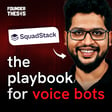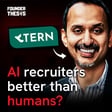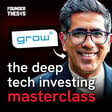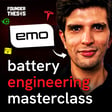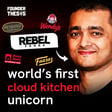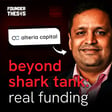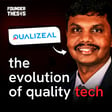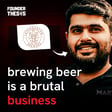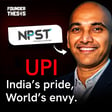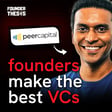
ESOPs Aren't Monopoly Money, Here's Why | Satish Mugulavalli (Hissa)
"ESOPs aren't lottery tickets; they're a calculated risk with a potential for real wealth creation."
This seemingly simple statement from Satish Mugulavalli, Founder and Managing Partner of Hissa, encapsulates the core message of this episode: shifting the perception of ESOPs from "paper money" to a strategic tool for both companies and employees. We unpack the often-confusing world of ESOPs, going beyond the jargon to reveal the real-world mechanics and benefits.
Satish Mugulavalli is the Founder and Managing Partner of Hissa, a platform revolutionizing private market transactions in India. Hissa facilitates ESOP liquidity for employees and provides access to growth-stage private companies for investors. Satish is building a 150Cr fund with a 150 Cr greenshoe option. They have already closed 30 crores in their first round. The platform has generated over 5Cr in revenue till date.
Key Insights from the Conversation:
✅Discounts are Normal: Understand why ESOP transactions often happen at a discount to the last valuation, and why it's not necessarily a red flag.
✅Tax Implications: Learn the crucial difference between perquisite tax and long-term capital gains, and how it impacts your decision to exercise.
✅The Founder's Perspective: Discover why companies offer ESOPs in the first place, and how they view them as a strategic tool.
✅The Employee's Perspective: Get practical advice on evaluating an ESOP offer and understanding your potential upside.
✅Building the Future: Hear Satish's ambitious vision for creating a transparent and efficient private market exchange in India.
✅The right questions to ask as an employee.
Chapters:
- 0:00:00 - Introduction: Demystifying ESOPs and the Rise of Hissa
- 0:03:15 - Satish's Journey: From Startup Ecosystem to Private Markets
- 0:05:36 - Hissa's Dual Approach: SaaS Platform and Investment Fund
- 0:11:05 - Target Market: Identifying the Right Companies for ESOP Liquidity
- 0:20:30 - The Hissa Fund: Investment Strategy and Fundraising
- 0:39:23 - Understanding Valuation Discounts in Secondary ESOP Transactions
- 0:58:11 - ESOP 101: Grant, Vesting, Exercise, and Tax Implications
- 1:02:37 - The "Why Exercise?" Question: Balancing Risk and Reward
- 1:07:38 - Employee friendly ESOPs
- 1:11:51 - Building the "NSE/BSE of Private Markets": Hissa's Long-Term Vision
- 1:18:00 - Hissa's Go-To-Market Strategy: Reaching Founders and Companies
- 1:25:00- Future of ESOPs
#ESOPs #StartupIndia #PrivateMarkets #Hissa #SatishMugulavalli #FounderThesis #Equity #Compensation #Vesting #StockOptions #Startups #Investing #Finance #India #Liquidity #TaxPlanning
